My dear readers, some links on this site pay us referral fees for sending business and sales. We value your time and money and will not waste it. For our complete advertising policy, click here. The content on this page is not provided by any companies mentioned, and has not been reviewed, approved or otherwise endorsed by these entities. Opinions expressed here are the author's alone.
On my quest to visit some of China’s Ghost Cities, I found three near Shanghai, perfect for my trip. I expected to find empty cobblestone streets and block after block of empty and under construction Tudor-style homes. What I found instead was Shanghai’s Instagram capital and much more than I anticipated.
If you are considering booking travel or signing up for a new credit card please click here. Both support LiveAndLetsFly.com.
If you haven’t followed us on Facebook or Instagram, add us today.
Build It And They Will Come
The lure of the so-called Ghost Cities of China captivated me for years. Stories on the BBC, Al-Jazeera, and Bloomberg showcased massive cities with no inhabitants. In a particularly persuasive piece, a reporter for Bloomberg found himself all alone in the middle of a city the size of Manhattan.
However, the West’s understanding as to why China builds Ghost Cities in the first place is generally incorrect. The book, China’s Ghost Cities, helps redirect the western thought process of efficiency. In western nations, we build more communities when we need more communities, where we need them. In China, however, because of the economic control the government has, they take more of a Field of Dreams approach, build it and they will come. And in order to make sure they do, the country will move universities and government offices there, lure businesses to build factories and faster than you would ever believe could be true, they have fulfilled their mission. Bloomberg has since updated that the aforementioned Ghost City is no longer vacant.
China’s Ghost Cities are built near major metropolitan areas but Shanghai’s are unique. Originally, downtown Shanghai (Pudong) was a Ghost City CBD (Central Business District) that is now one of the busiest areas of the city and home to some of the highest rents. For further expansion outside of the city core, Shanghai focused on a replica community approach. Several such cities were built, one themed as an English city (Thames Town, after the river in London), another was German-themed Anting Town with a focus on auto and a nearby Volkswagon plant, for example. I settled on the easiest one to reach with a nearby metro station.
Thames Town
Stepping out of the cab from the closest train station (Songjiang Xincheng) and paying the fare of 17 CNY ($2.85) I nearly scared my driver to death. As I opened the door, another car driving on the nearby sidewalk slid between my door and the curb. I was dangerously close to scratching or denting a brand new Porsche Cayenne. The driver’s look made it clear who was at fault – me. How could I blindly open the door towards the sidewalk, shouldn’t I have expected her to drive there?

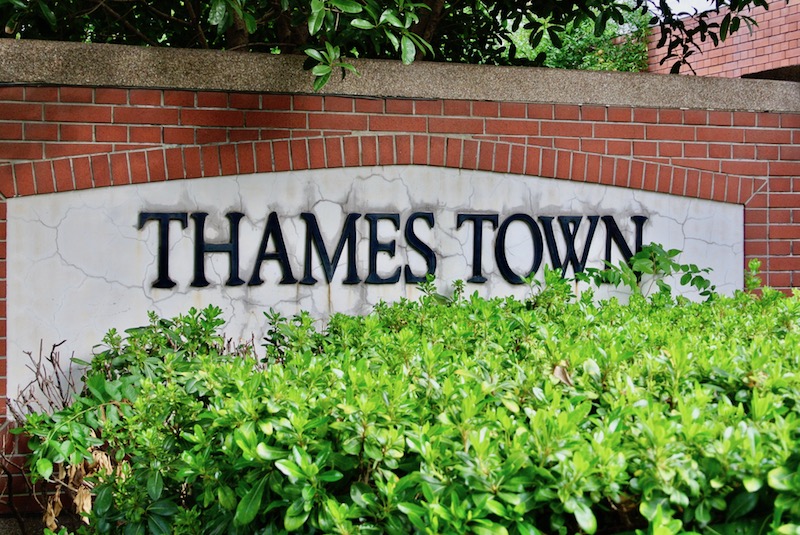
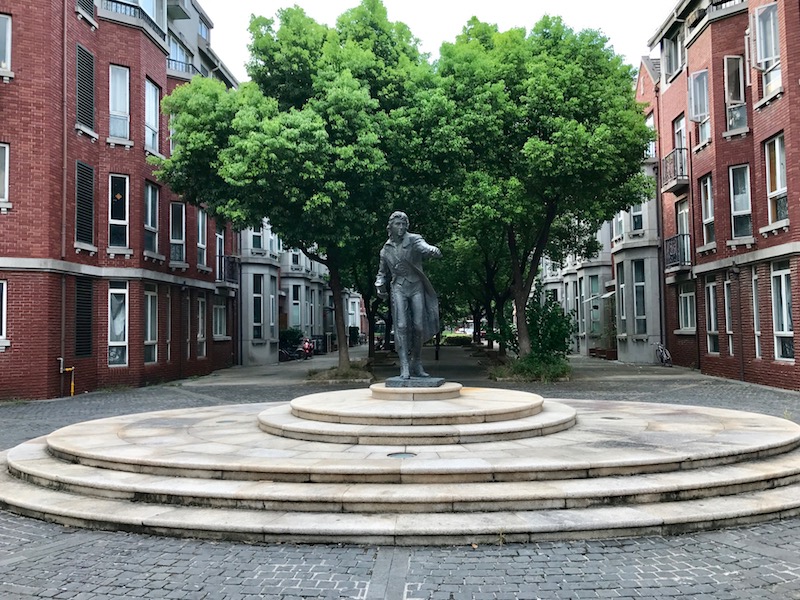

As I walked through the village, star struck by the intricate detail put into the town I was also disappointed. I was in search of ghost towns and this was no such place. Every street was lined with cars, predictably expensive imports. One particularly well-heeled block didn’t hold a single vehicle that would retail for less than $50,000.
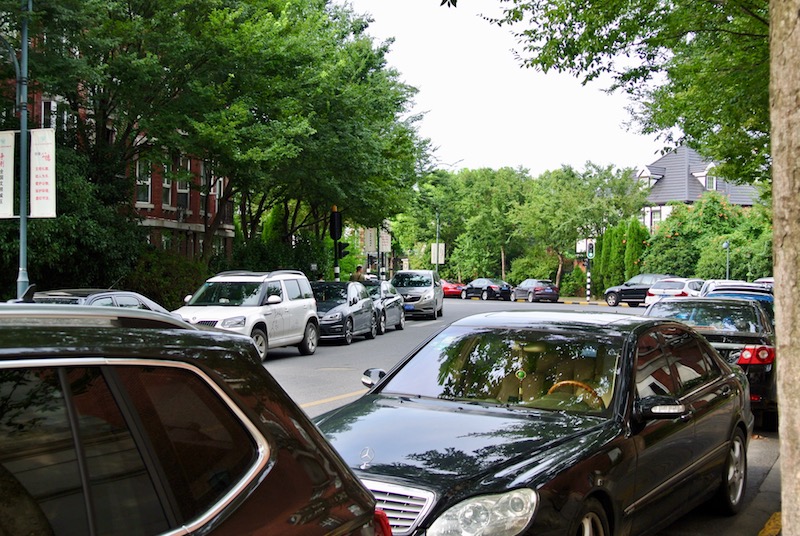
As I walked the streets, Chinese families and couples were snapping photos, walking dogs, and chatting. In front of a statue of Churchill, I stood with my camera mounted on a tripod for better than ten minutes before I could get a clean shot. Ghost Town, my ass.

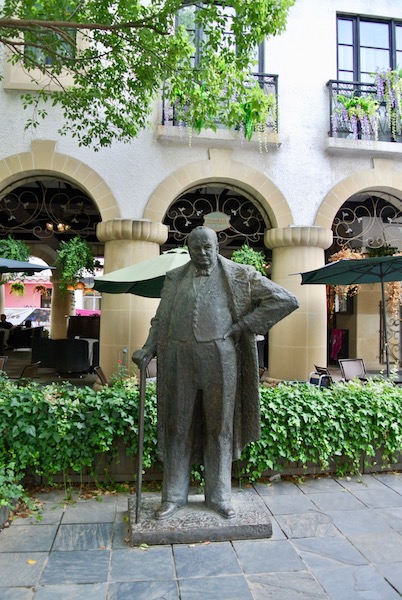
While I was disappointed not to find the barren streets I’d been promised I was also delighted to find Chinese people experiencing a taste of Europe in their own backyard. Behind the Churchill statue in a cafe by the same name I found true European culture than I have missed for years since our last visit. A man at an outside table flips pages of a newspaper while he sips coffee, and ashes his cigarette. Occasionally he glances up and watches passersby. Mostly, he’s exactly where he wants to be enjoying a Saturday afternoon as anyone would on the boulevards of Europe.
Meandering down streets that wind incongruously, I could pretend I was back in Manchester. Tudor-style buildings have ground floor beer bars and apartments upstairs. If it weren’t for the Chinese characters and flashing neon additions it would be hard to definitively judge by only looking at a photograph where in the world I was.
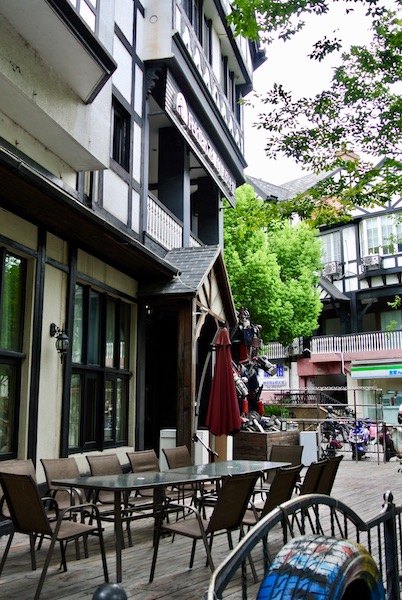
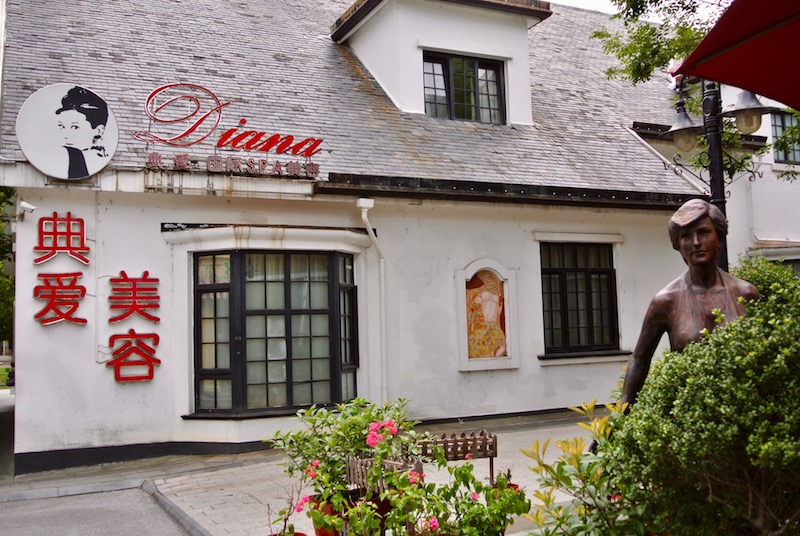
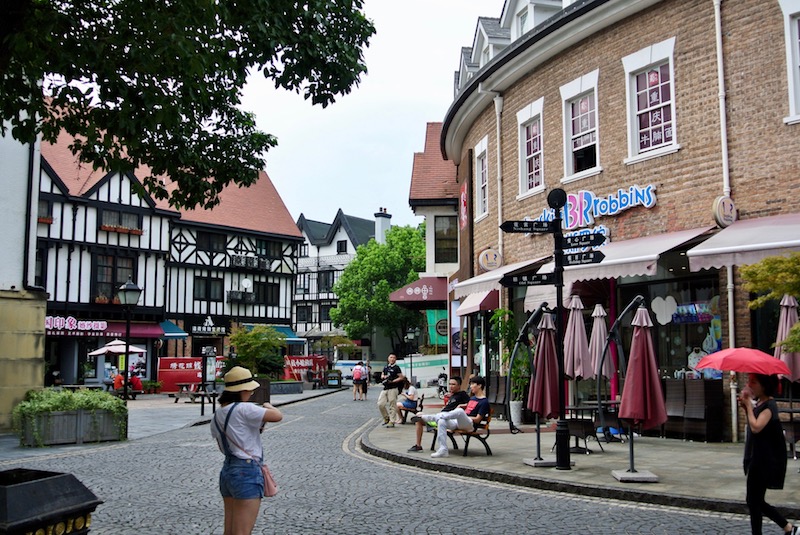
About every third shop was related to photography and more specifically wedding photography. Tux rental shops, tailors, even wedding dresses for hire all available to make your English wedding photo dreams come true. It wasn’t just wedding photography, kids photos, families, cars, even those that would put your photos on microfilm – for whatever purpose that would serve – all paint the picture of what is becoming plainly obvious. This isn’t a city, it’s a set.
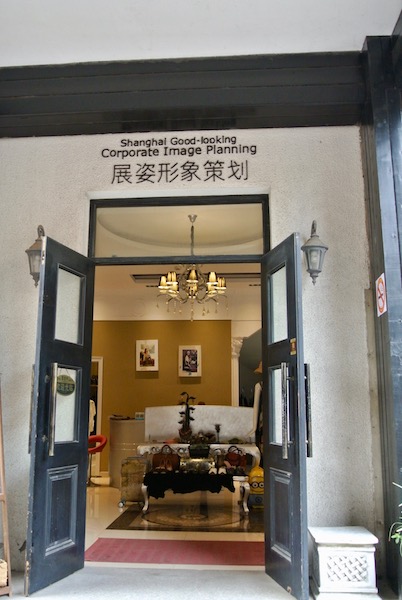
China, like the rest of Asia, is already a “selfie” culture. Posing against brick walls or tossing a two-fingered peace sign has and will be part of Chinese youth. Parents get a little more sophisticated, or so they think. They attach selfie sticks and hold them up with inane objects of no meaning. Their photos must scream “Here I am with a bush” or “There I go, walking again”.
Here in Thames Town, originally built to house the expansion of Shanghai and create a suburban culture, has instead become the backdrop for Shanghai’s wealthy and photogenically-inclined. Whether visitors are sharing benches with English playwrights or high-fiving prime ministers, they have come here for one purpose and one purpose only.
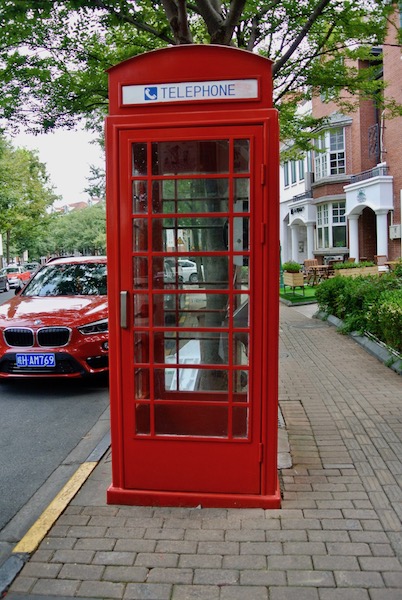
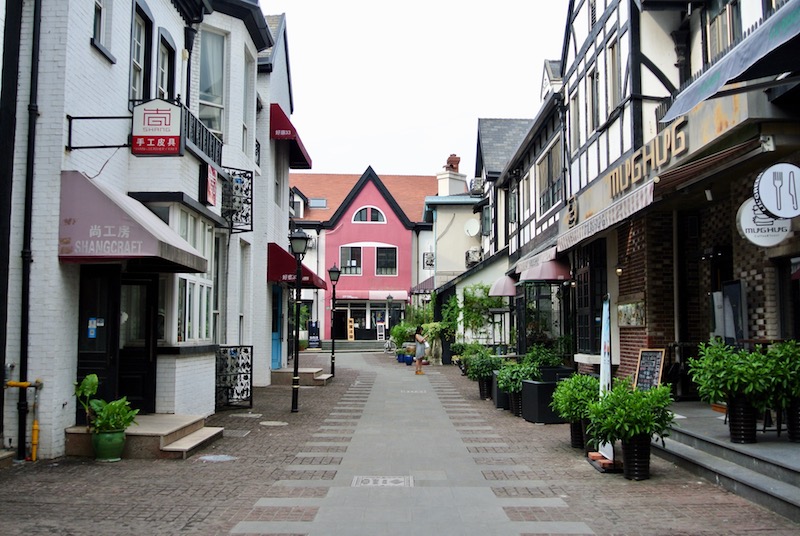
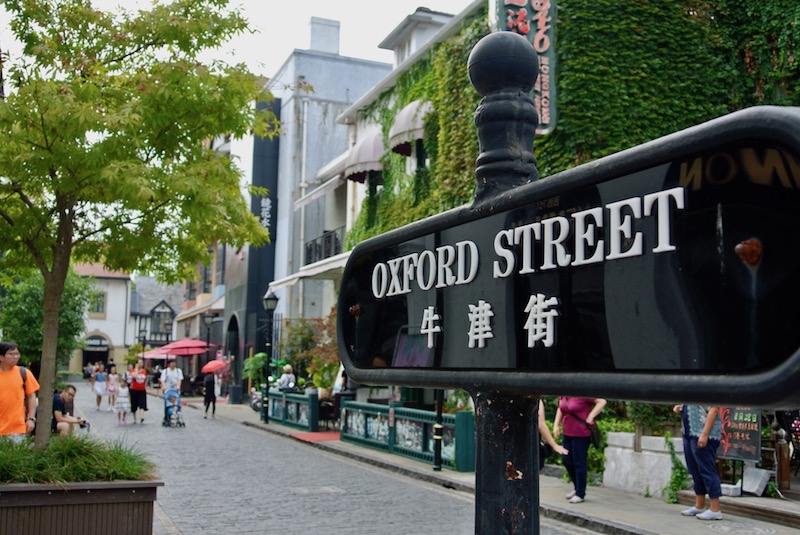
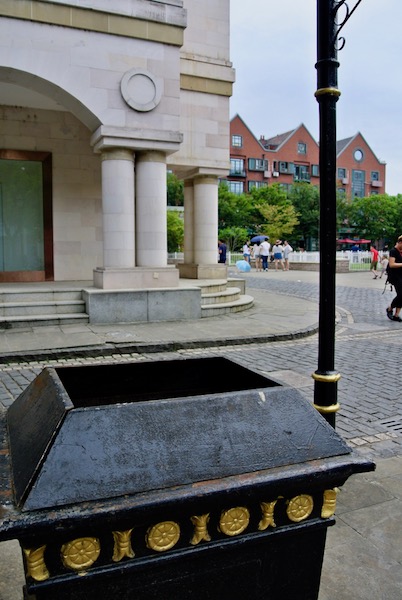
At one point there were three separate brides and their grooms all having the same photo taken as other Chinese walked around and behind them, undoubtedly included in the background of every shot. One bride reduced to tears as a result. In fairness to the others, the bride was standing at the front entrance for close to 20 minutes on a Saturday afternoon and was frustrated that others wouldn’t let her have her moment. Perhaps her photographer could have snapped faster. She had a point (couldn’t they wait just a few minutes) but then she didn’t (what should she expect in a busy day at a touristy location like this?) Personally, I took her visible anguish as an indication it was time for me to find another way into the church.
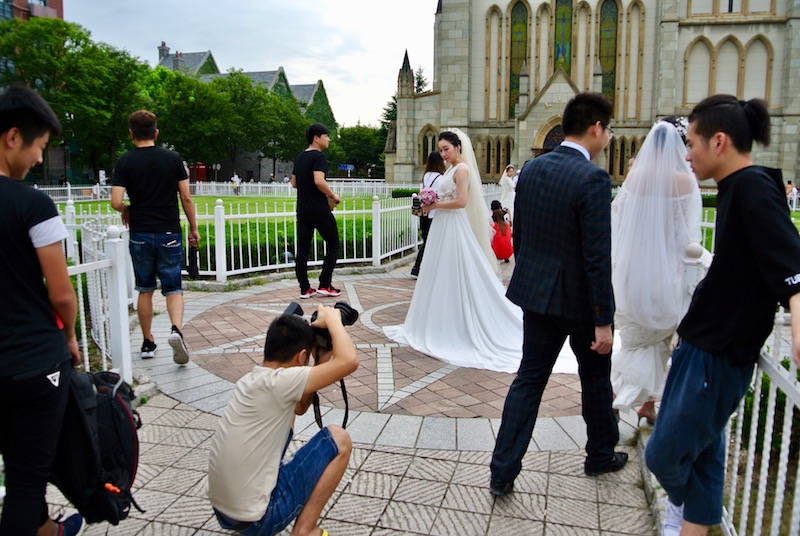
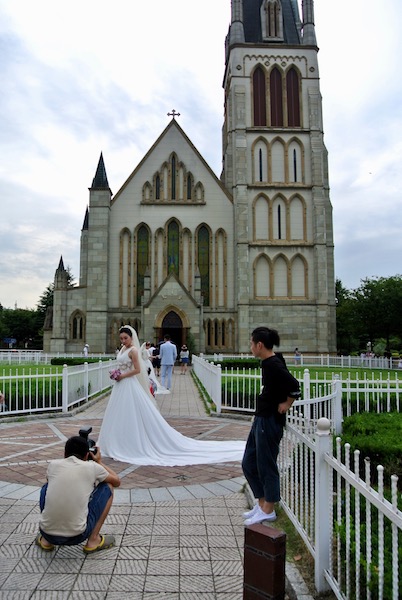
I was asked to remove my shoes on the way in, something that happens at many churches and temples throughout Europe and Asia, though, confused when I found mine were the only ones. I had just seen another visitor walk in, so it struck me as odd. Turning the corner to enter the sanctuary revealed no less than 30 Chinese visitors, mostly young couples, sitting in pews and reading what I can only assume was the story of Christianity. It was instantly clear that this was more of a living museum than a place of worship, but I was still surprised that there was anything on the inside at all. Having seen plenty of churches in England and elsewhere, I quickly exited, retrieved the only pair of shoes waiting (mine) and slipped out the door.
I made my way to what I have read is the crescendo of this village opus, a traditional English church. There’s very little religion in China and I had understood the building to be used solely as decoration. When I approached the steeple I noticed the doors were open.
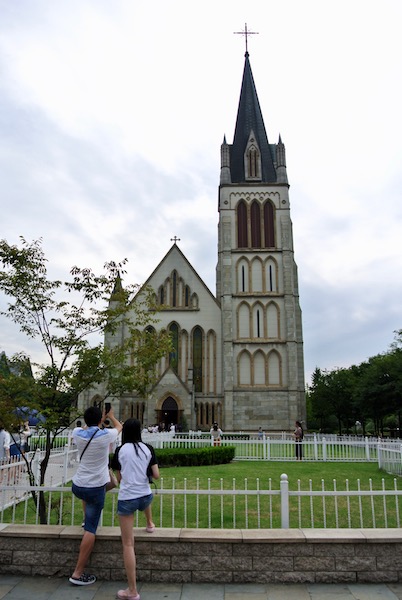

On the side of the building was yet another couple, this one the smartest yet, taking wedding photos against a disused entrance to the church (likely a façade). In the garden outside, full on photo shoots with Instagram-husbands were in effect. The “models” pranced through a vine-covered lattice as if it were a runway, striking different poses and then running over to see the result. A quick fix of their hair or shirt and they’d return to their stage. Their significant others were putting on a brave face but from the looks of it, this was probably their afternoon. It was at that moment, I didn’t mind being on a solo trip.

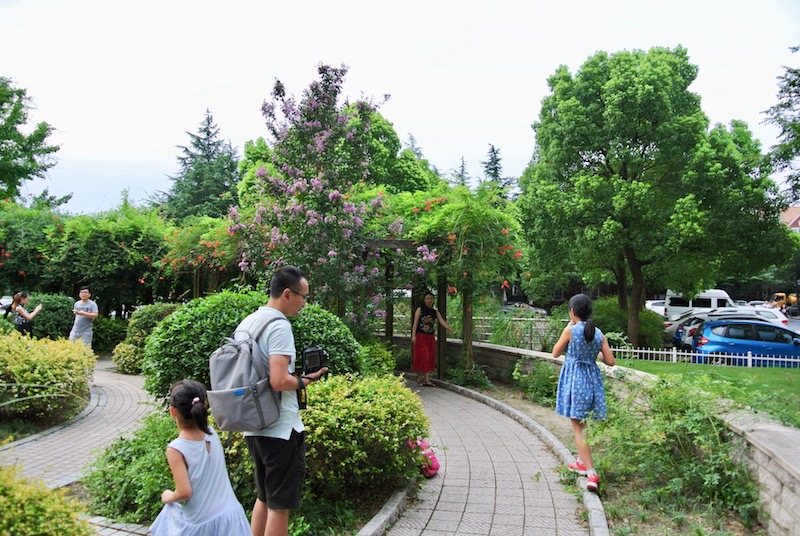
I found myself on a seesaw of emotion. On one hand, I felt utter contempt for the country to build a literal backdrop for Chinese social network photos. On the other hand, there were groups of girls at an outdoor cafe with their dogs having tea and coffee, the gentleman I mentioned at Churchill’s reading the paper, an old man admiring dragonflies on a park bench. It seemed that despite the facade and scenery a real transposition of cultures was taking place and I admired it and its participants.
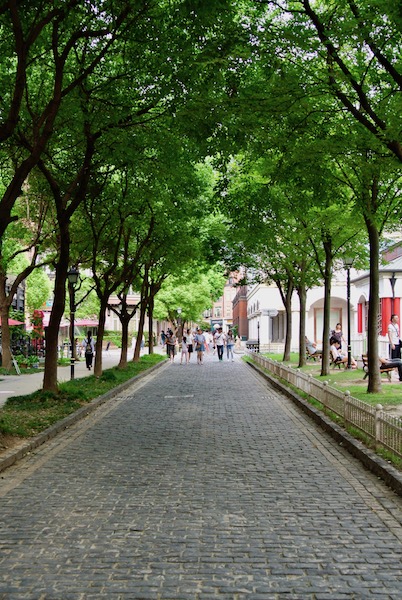
While I regret having missed the true Ghost town I had sought – I must have been years too late – I did enjoy my time in Thames Town. Only one question remained: if Facebook owns Instagram, and Facebook is blocked in China by the Great Firewall, then where are these photos going? #ThamesTown #NotGhostTown #WeddingPhotoFolly
Have you been to a Chinese Ghost City? What did you think? Is the building of mirror cities the ultimate form of flattery, or an example of unoriginality?




As much as I’d like to mock this construction and behavior, I’ve been to Las Vegas too many timesto think they are any different than Americans. And if I cared about going to any Disney park, I’d have even less to say. 🙂
I think there is some merit to that argument, however, each of those places was built piece-by-piece and with commerce in mind. While Thames Town was busy when I visited over a weekend, many Ghost Cities remain mostly vacant, and I doubt it was as bustling on a Tuesday where Vegas and Disney don’t share that problem.
I don’t find anything wrong with the themed towns. If it creates a different atmosphere that people enjoy, who’s being hurt? As to the brides wanting good photos, I feel their pain. Having dealt with many a horde of Chinese mainland tourists on a variety of trips, I’ve observed that they just don’t care if they’re in your important picture. It’s doubtless a cultural thing.
I agree with these comments. I was expecting to find a vacant ghost city, so when I arrived it was very busy, my perspective changed and I was hoping for that there was some cultural absorption. There was very little (man at Churchill’s) and mostly selfie sticks. I think that is why my reaction had varied.
Solvang is a Danish themed town in California!
I might have to check that out.
A very good reading. I’m looking forward to your next adventure!
Thanks Robert, I am glad you enjoyed it.
They’re probably posting on weibo or wechat
Undoubtedly. The last line was tongue-in-cheek, but I do wish I could find it. If you happen to have the mandarin characters I will search Weibo to try and find them.
Kyle, I myself just came back from a weeklong business trip in China. What struck me is the efficiency of the government when it comes to infrastructure building. Shanghai decided that they needed a metro system so they built multiple lines simultaneously! Seattle, where I live now, projected that they will finish a sub 10 miles light rail extension by 2030, no comparison there. One thing they need to solve is air quality. In a week when I was there, whether it was Shenzhen, Guangzhou or Shanghai, the smog is omnipresent. My Shanghai hotel is at Nanjing road area (Portman RC) and I was supposed to be able to see Jinmao Tower and all I saw was grey.
Bob, great comments, thanks for adding them. I agree that Chinese efficiency for mass building projects is legendary, however, they have some advantages that the US does not. For one, the government works toward the progress of those projects differently without the mess of various municipalities coming into play. Secondly, they are at a developmental stage in many areas that the US resolved decades ago, so their progress should be compared perhaps with the 1920s Manhattan buildout and then scaled for technological and transportation advances over the last century. Third, they can build those lines to places that do not yet have traffic to justify them because they will fill them in with SOE (State-owned enterprises) like government agencies and universities. The citizenry will fill in the gaps to be close to their jobs and school, whereas US equivalents would let the market build out those communities. The book I link to in the post helps to form thinking from a US perspective to a Chinese one, and then, all of the sudden the theory makes a lot more sense.
One note on viewing Jinmao tower – the best view is from the Park Hyatt Shanghai.